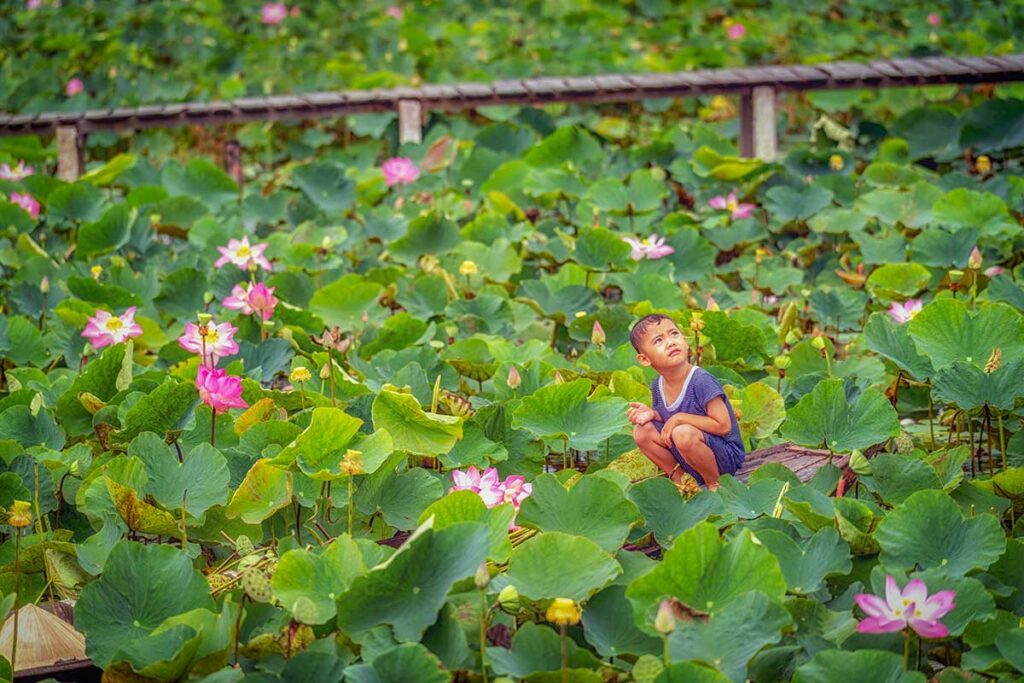Dong Thap – Mekong Delta Province of Lotus & Nature
Dong Thap lies in the heart of the Mekong Delta, bordered by An Giang, Vinh Long, and Cambodia. The province is shaped by the Mekong River and its canals, creating a landscape of rice fields, lotus ponds, fruit orchards, and stretches of cajuput forest. It is best known for Sa Dec Flower Village, the wetlands of Tram Chim National Park, and seasonal highlights like lotus blooms and Lai Vung mandarins. Daily life here revolves around farming, river trade, and small crafts, with a mix of Kinh, Khmer, and Hoa communities.
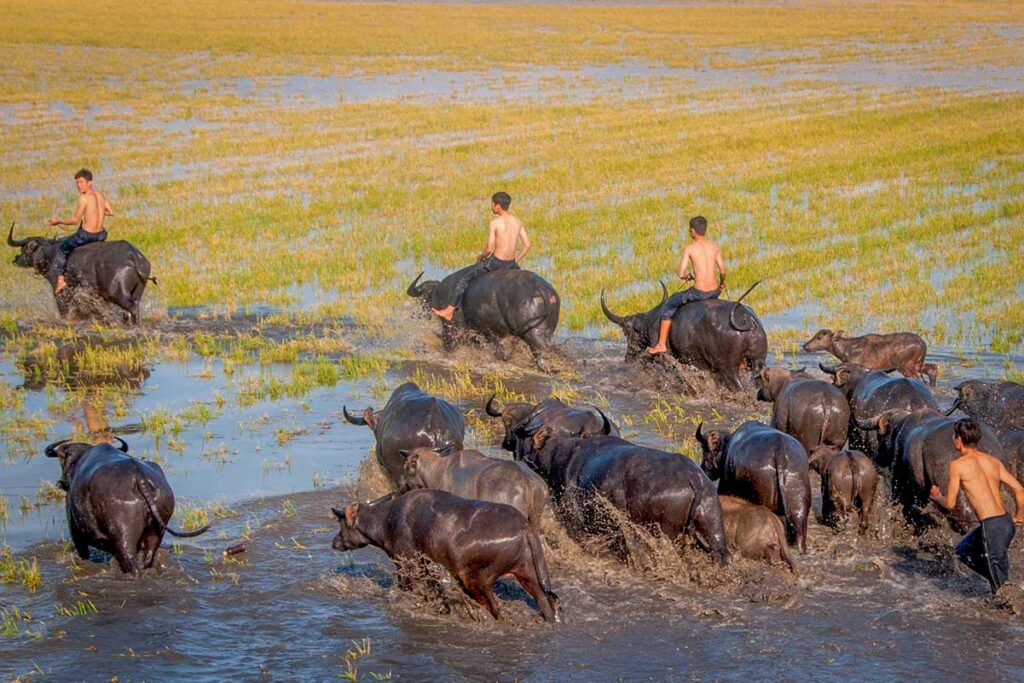
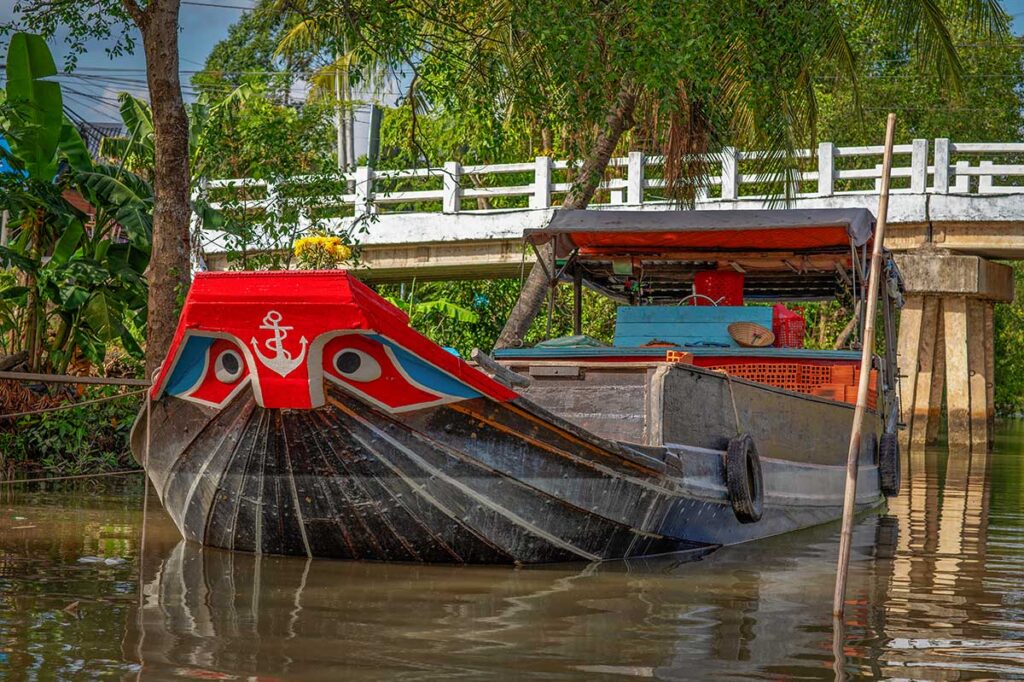
Beyond its natural appeal, Dong Thap has historical sites such as Xeo Quyt and Go Thap, reminders of its revolutionary past. The population is a mix of Kinh, Khmer, and Hoa communities, with farming and craft traditions like sedge mat weaving still part of daily life. Tourism is modest compared to other Delta provinces, but that is also its charm: for foreign visitors, Dong Thap offers a quieter, more authentic glimpse into the countryside.
Best things to do in Dong Thap
1. Tram Chim National Park
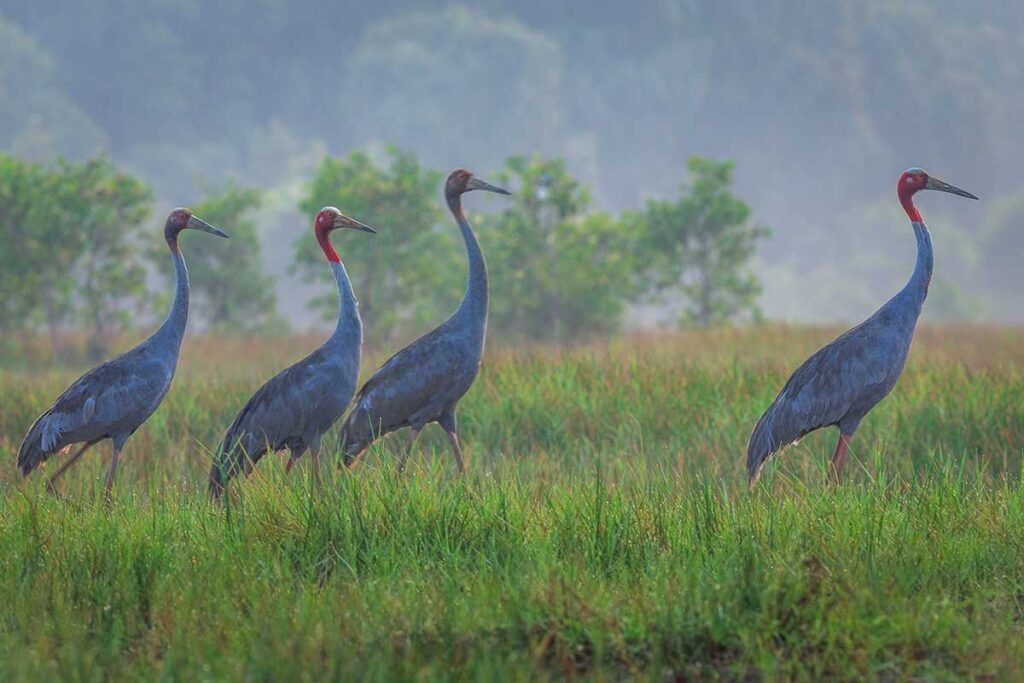
Tram Chim National Park is the most famous nature reserve in Dong Thap and one of the best birdwatching spots in Vietnam. Covering more than 7,500 hectares of wetlands, it is home to over 200 bird species, including the rare red-headed crane that returns during the dry season (around March–May).
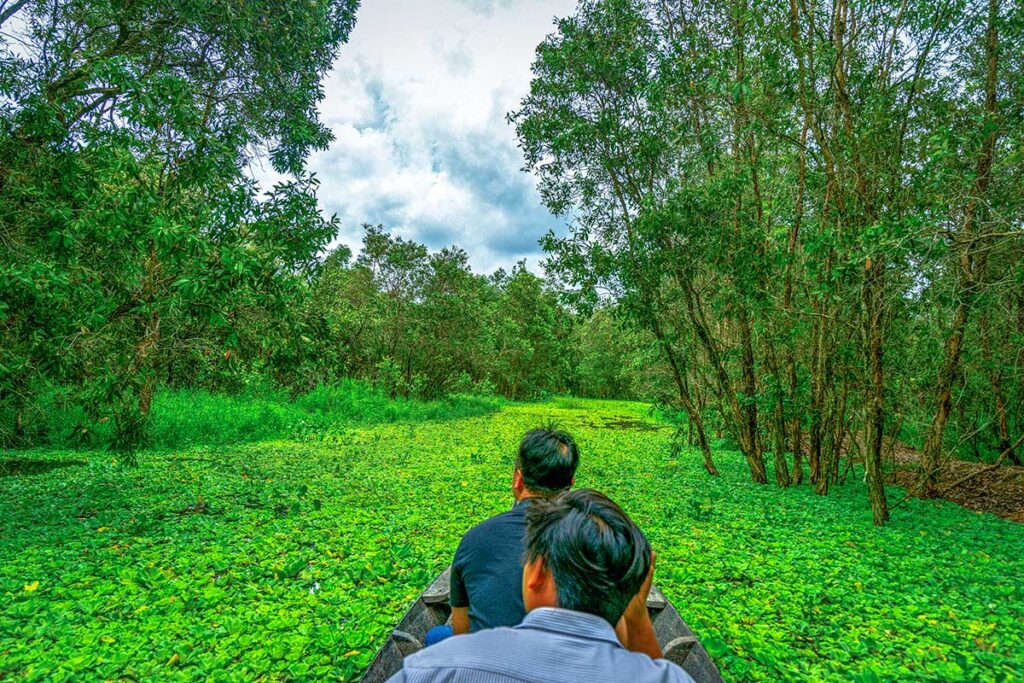
The park is best explored by boat, drifting through lotus-filled waterways and vast grasslands. While bird numbers can be unpredictable outside peak season, the scenery alone makes a visit worthwhile if you enjoy quiet nature.
2. Xeo Quyt Forest
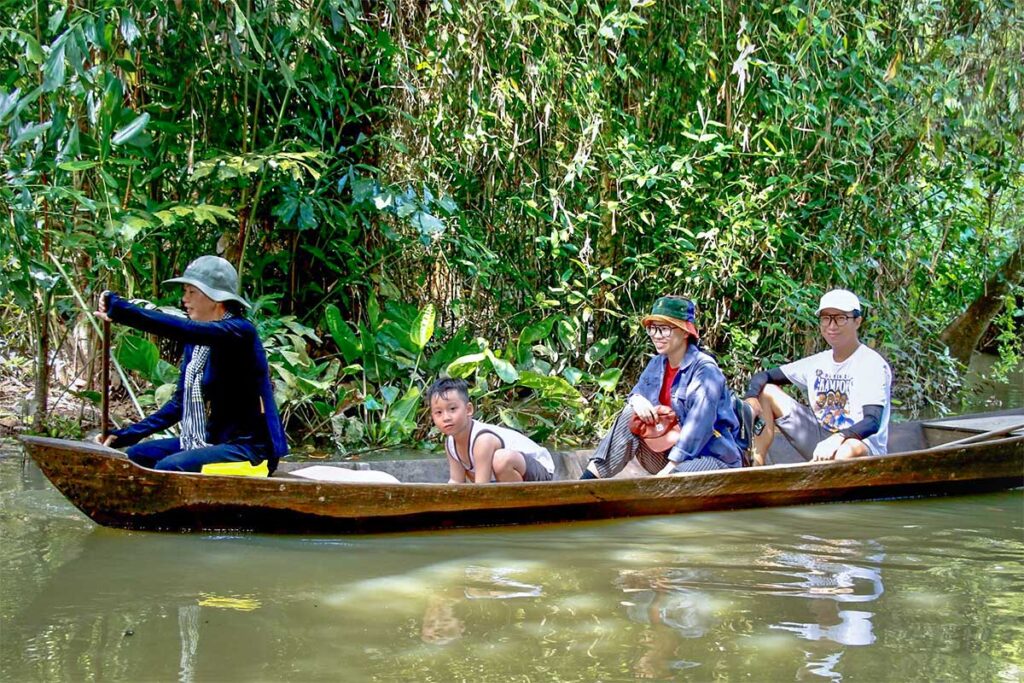
Xeo Quyt Forest combines natural beauty with history. This 50-hectare cajuput forest was once a Viet Cong base during the war, and remnants of bunkers and hideouts can still be seen along the trails.
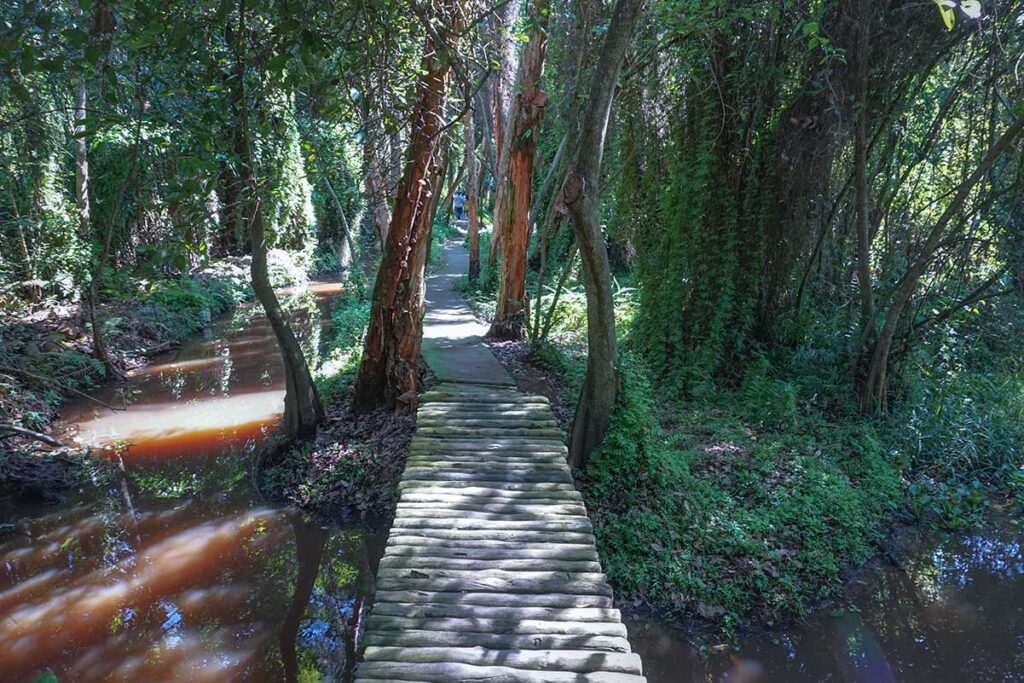
Visitors can either walk the 1.5 km path or take a sampan ride through the narrow canals shaded by water ferns. The mix of dense greenery and wartime relics makes Xeo Quyt more than just a nature stop — it’s also a glimpse into Vietnam’s recent past.
3. Sa Dec Flower Village
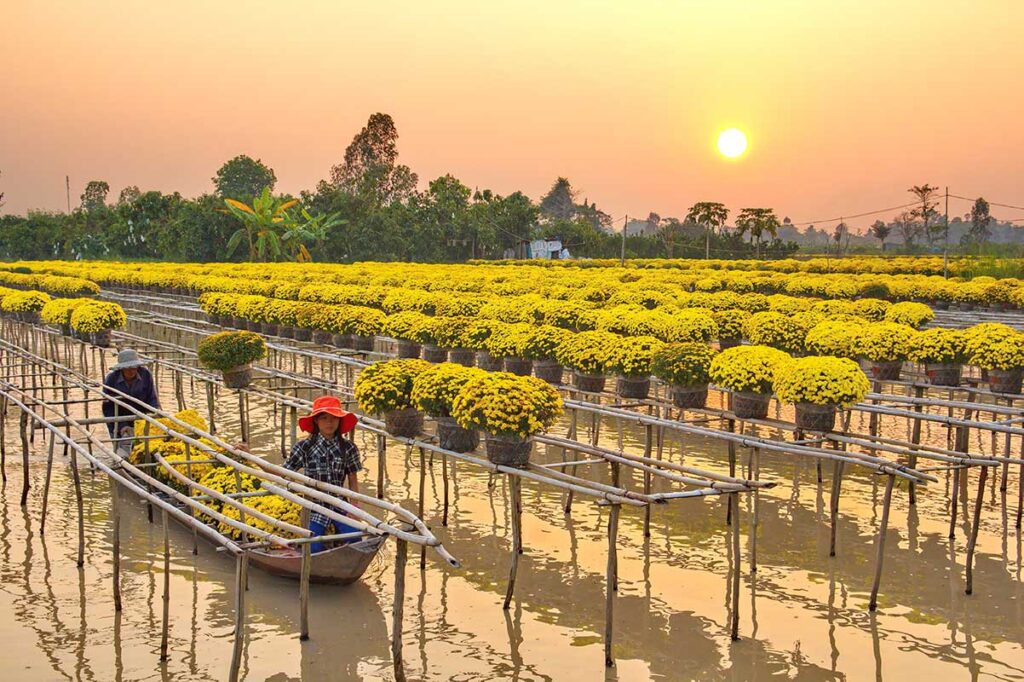
Sa Dec Flower Village is the highlight for anyone visiting during Tet, when the gardens explode with color as flowers are prepared for the Lunar New Year markets. Covering dozens of hectares, it remains active year-round with nurseries cultivating bonsai, orchids, and ornamental plants. The village is especially photogenic because many flowers are grown on raised platforms above water. Outside of peak season, it is still interesting, but the scale and atmosphere are most impressive in the weeks before Tet.
4. Huynh Thuy Le Ancient House
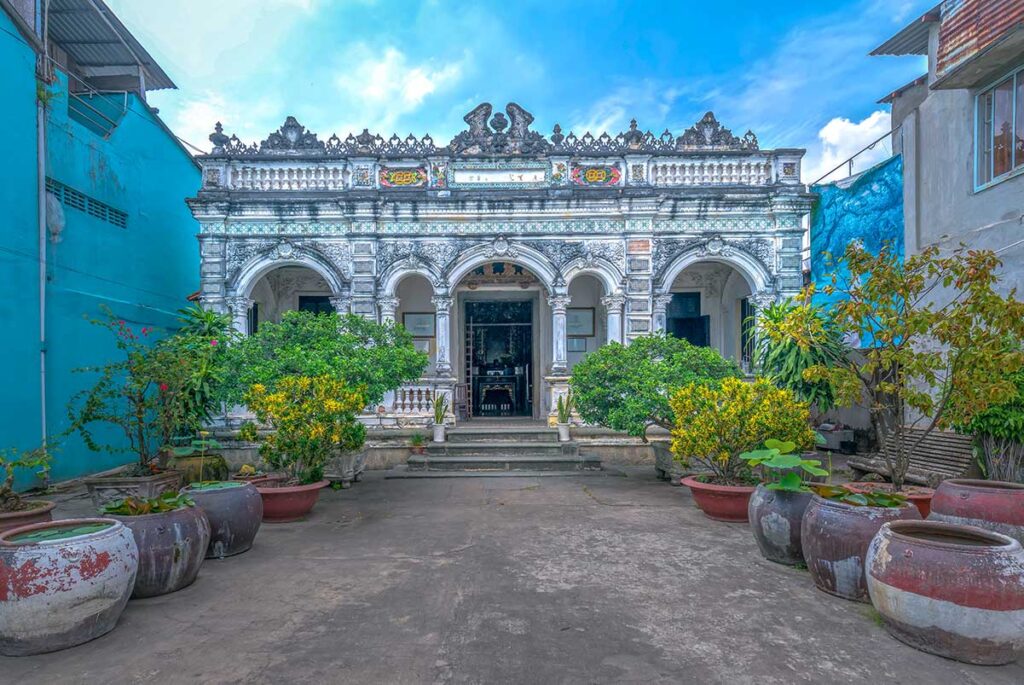
Huynh Thuy Le Ancient House in Sa Dec is a beautifully preserved 19th-century mansion that blends Chinese and French architectural influences. It is most famous as the home of Huynh Thuy Le, whose relationship with French writer Marguerite Duras inspired the novel The Lover. The house can be visited to admire its interiors, antiques, and the story behind it.
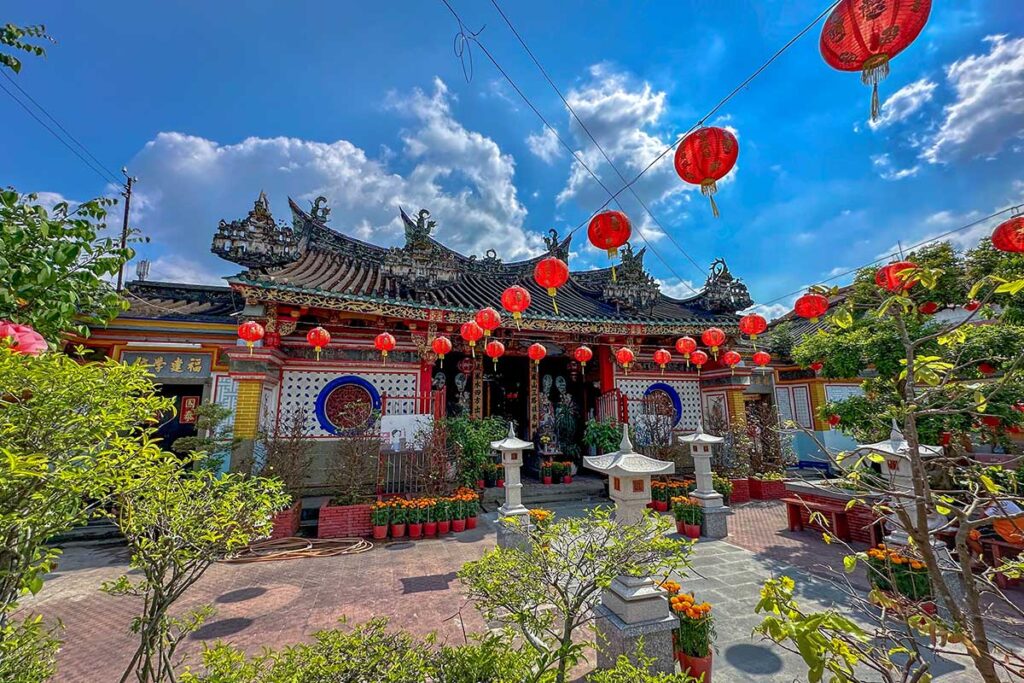
Just a short walk away is Kien An Cung Temple, a colorful Chinese pagoda built by the Hoa community. While not as large as temples in other provinces, it adds cultural depth to a stop in Sa Dec.
5. Go Thap Relic Site
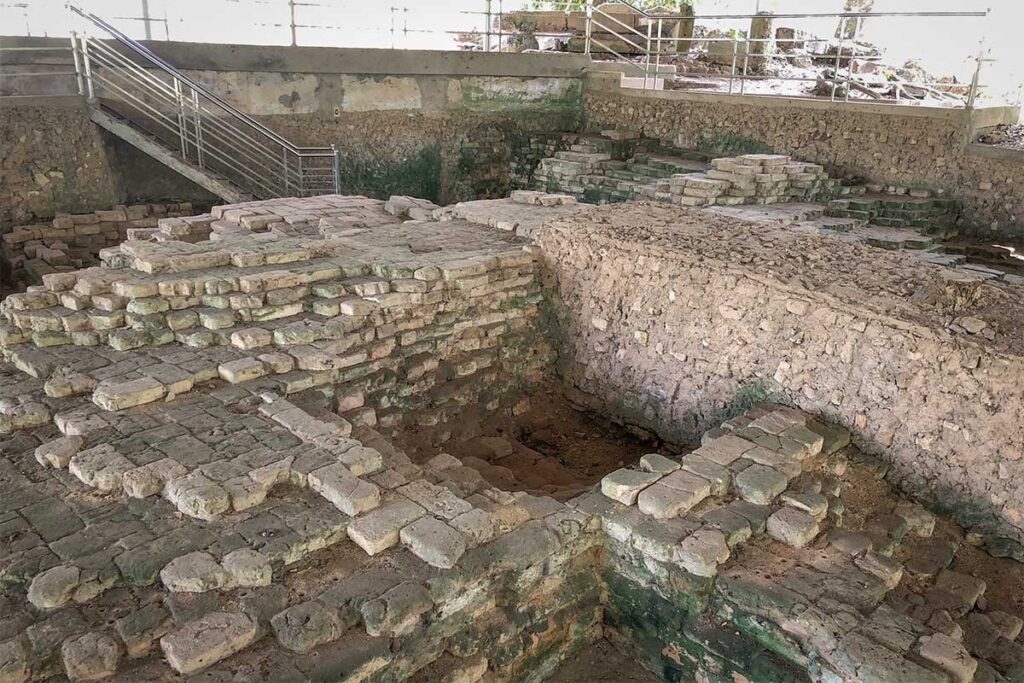
Go Thap Relic Site is an archaeological and spiritual complex linked to the Oc Eo culture, which flourished in the Mekong Delta around 1,500 years ago. Excavations here revealed ancient artifacts, and today the site includes temples, shrines, and lotus ponds spread across a quiet rural area. Pilgrims still visit regularly, giving it a lived-in atmosphere. Foreign travelers may not find it as visually striking as other Delta highlights, but Go Thap is a meaningful stop if you’re interested in history and archaeology.
6. Dinh Yen Mat Weaving Village
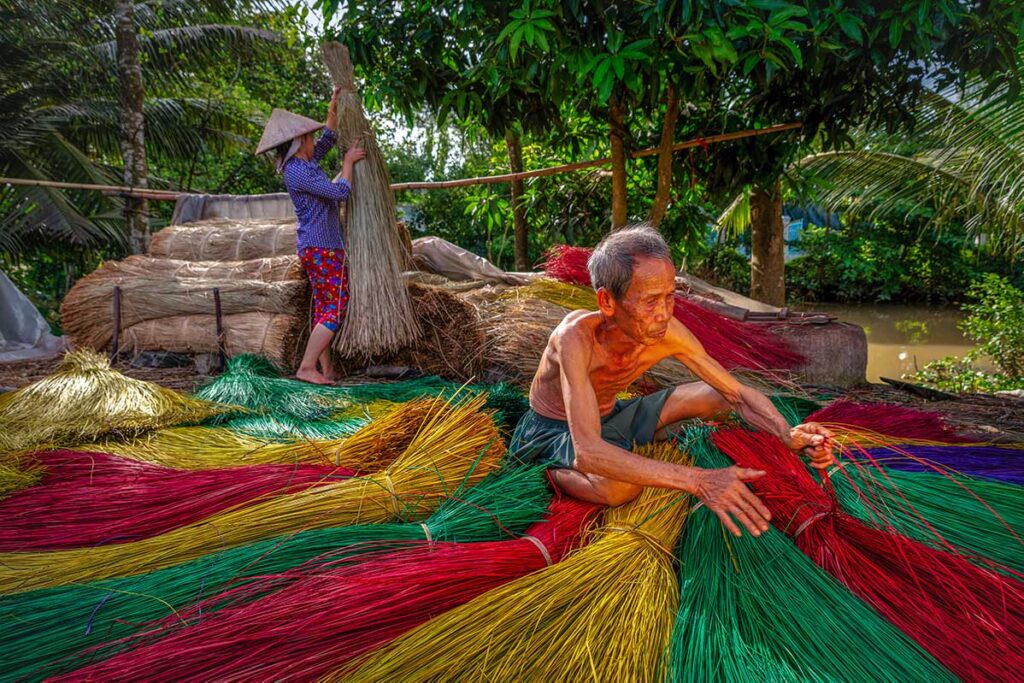
Dinh Yen Mat Weaving Village is one of the few places in the Mekong Delta where traditional sedge mat weaving is still practiced. The village comes alive with color as long strips of dyed sedge are dried in the sun before being woven into mats. Visitors can walk through small workshops, see the weaving process, and chat with locals who have been doing this for generations. While it’s a simple stop, it feels authentic and photogenic, especially if you’re interested in local crafts.
7. Lai Vung Tangerine Orchards
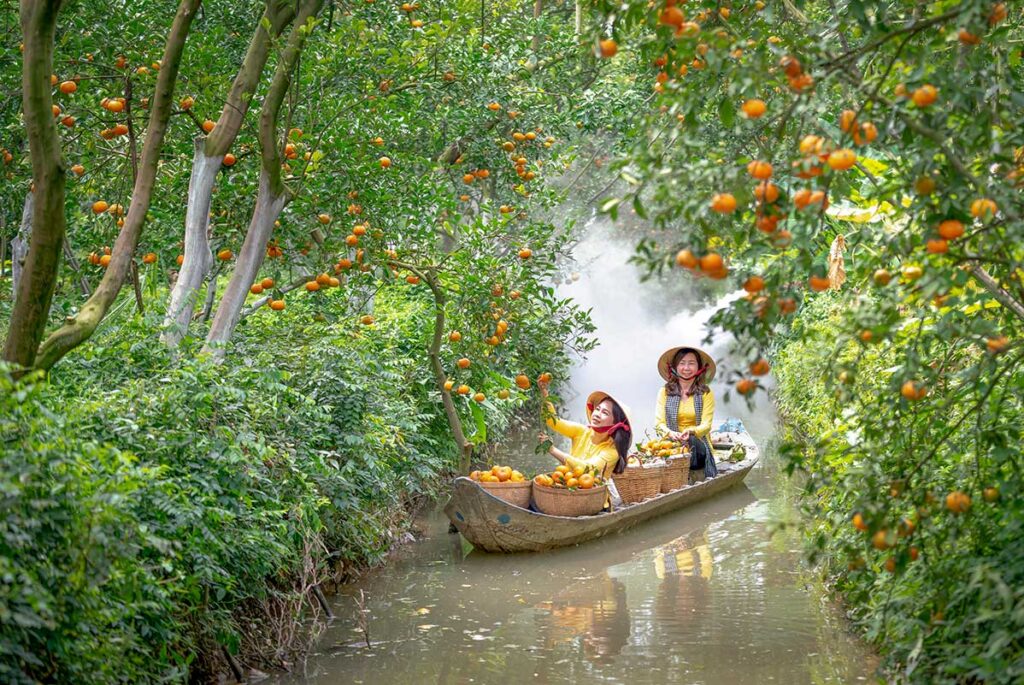
Lai Vung District is famous across Vietnam for its sweet mandarins, harvested mainly in December and January. During this short season, the orchards are a bright orange sea of fruit, and farmers often welcome visitors to taste and buy directly from the gardens. Outside harvest time, Lai Vung Tangerine Orchards are less lively, so timing matters if this is on your list. If you’re here in season, it’s a unique chance to experience one of Dong Thap’s agricultural traditions.
8. Boat tours & Mekong cruises
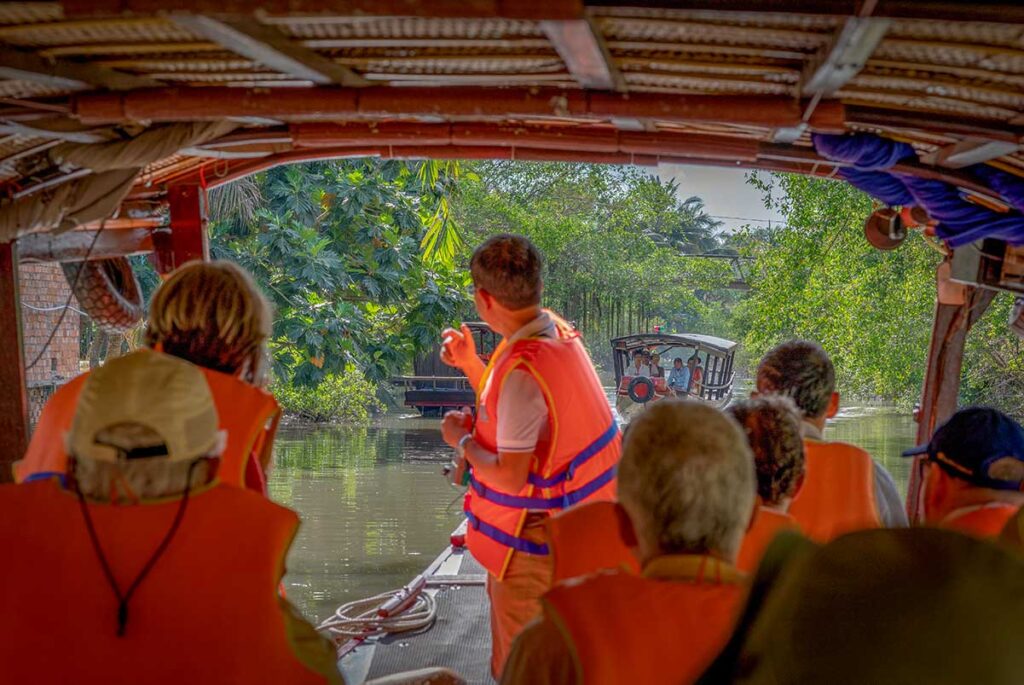
The Mekong River runs through Dong Thap, shaping daily life in both Sa Dec and Cao Lanh. Simple boat tours are available on the smaller canals, offering a chance to see villages, flower nurseries, and riverbank farms from the water. Compared to Can Tho or Ben Tre, tours here feel more local and less polished, which can be both a charm and a limitation.
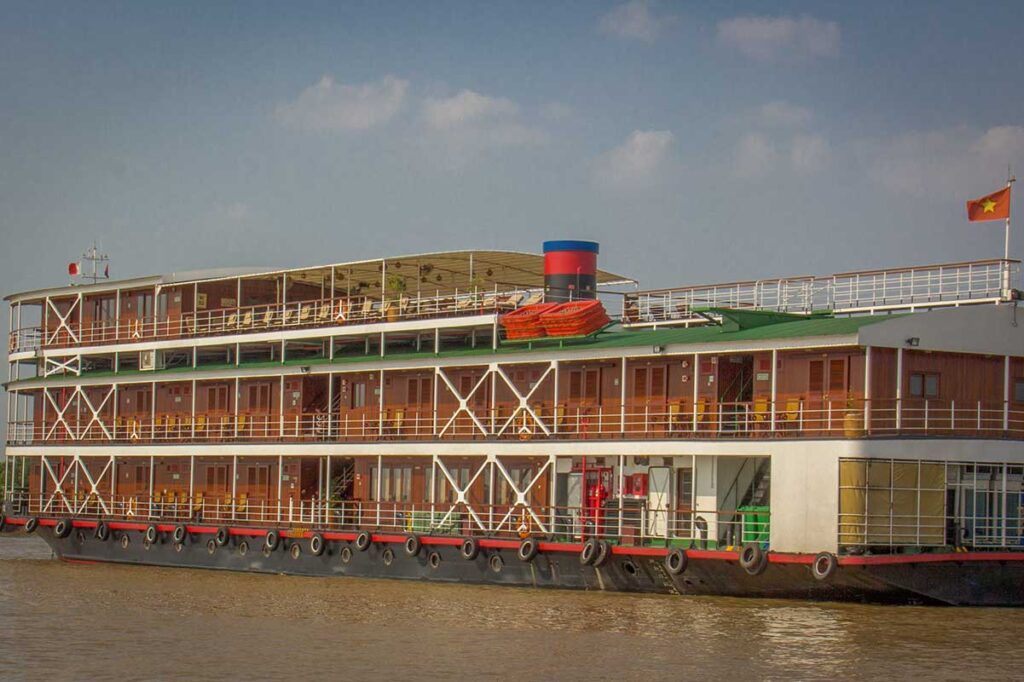
For those on a longer journey, some overnight Mekong cruises between Ho Chi Minh City, Can Tho, and Chau Doc include a stop in Sa Dec. These itineraries usually feature Sa Dec Flower Village and Huynh Thuy Le Ancient House, giving you a taste of Dong Thap as part of a wider Delta route. If you’re already in the province, a short boat ride adds variety to your visit; if you’re planning a cruise, check whether Sa Dec is on the program.
9. Local Countryside & Canals
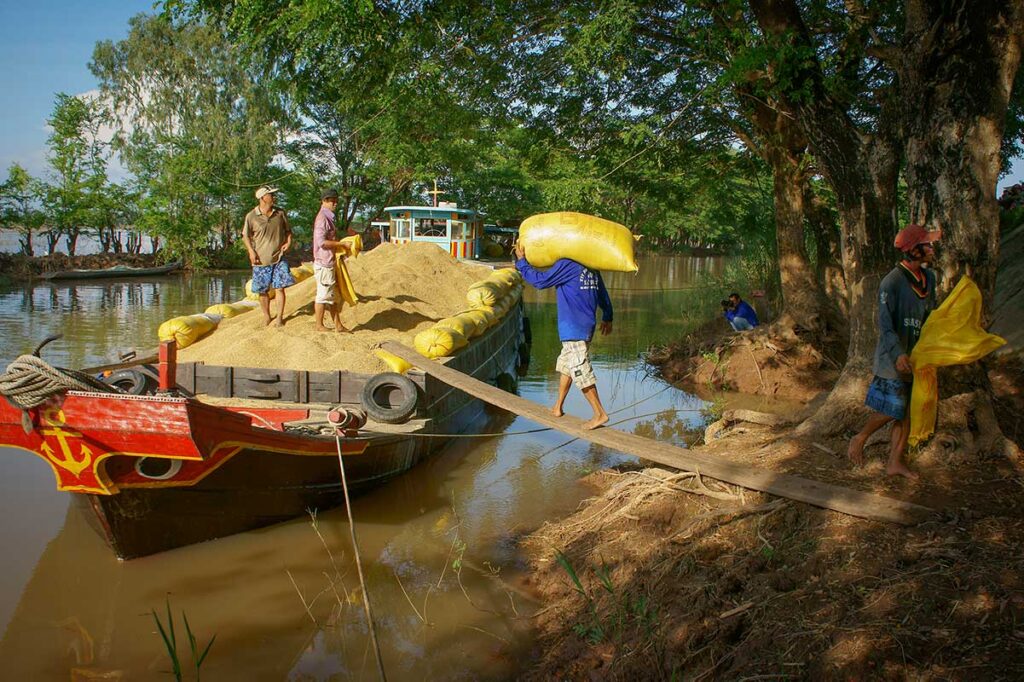
Much of Dong Thap’s charm lies outside specific attractions, in its countryside and waterways. Cycling through small villages, visiting local markets, or taking boat rides along the canals gives you a good sense of daily life here.

Compared to Can Tho, the area is quieter and less commercialized, which can be both a strength and a limitation depending on what you’re looking for. If you value authentic rural scenery over polished tours, exploring the local countryside is one of the most rewarding things to do in Dong Thap.
10. Lotus fields & Specialty farms
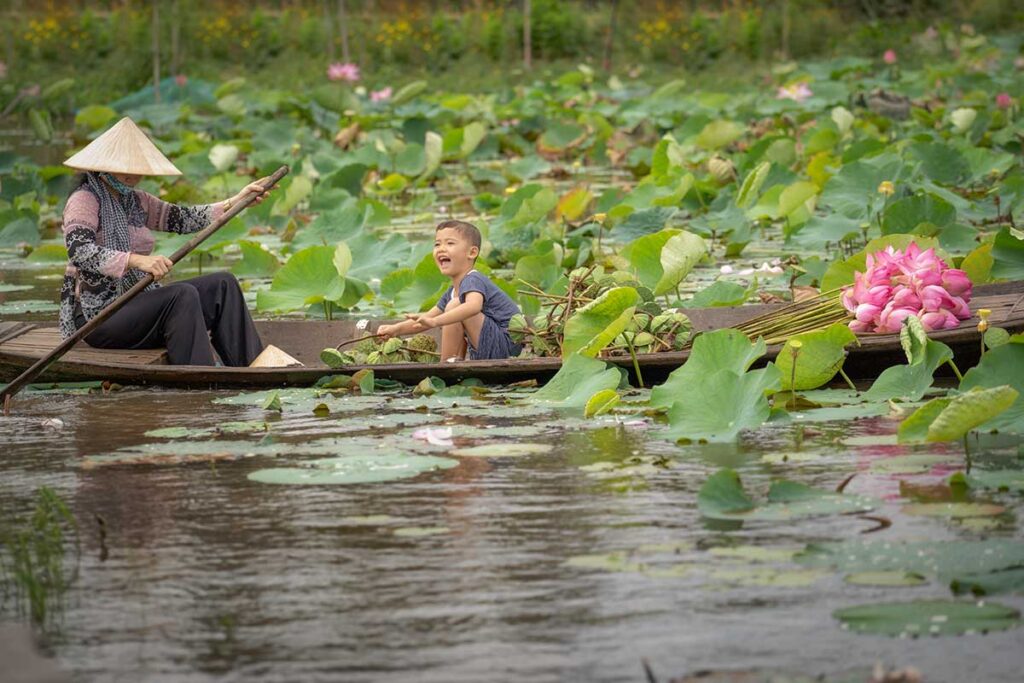
Lotus is a symbol of Dong Thap, and fields can be found especially around Cao Lanh. In season, wide ponds filled with blooming lotus flowers are striking, and some farms allow visitors to take boats out among the blossoms. Many also sell lotus-based snacks and drinks, from tea to cakes. The experience is short and simple, but it captures one of the province’s most iconic images. Lotus Fields & Specialty Farms are best combined with other nearby stops rather than as a main destination on their own.
Best time to visit Dong Thap
Dong Thap has a tropical climate with two clear seasons: the dry season from December to April and the rainy season from May to November. Temperatures are fairly stable year-round, usually between 22°C and 33°C (72–91°F). Rain showers in the wet season are often heavy but short, leaving the rest of the day warm and humid.
For most travelers, the dry season from December to April is the easiest time to visit, with clear skies and plenty of flowers in bloom. January and February are particularly colorful when Sa Dec Flower Village prepares for Tet. Between March and May, Tram Chim National Park is at its best for birdwatching, with the chance to spot red-headed cranes. December and January also mark the Lai Vung mandarin harvest, when orchards are at their brightest. Visiting outside these months still has its rewards: during the rainy season, lotus fields bloom and the landscape looks especially green and alive.
How to get to Dong Thap
Main hubs
Dong Thap has two main centers for travelers. Sa Dec is the cultural hub, home to the flower village, Huynh Thuy Le Ancient House, and several historic temples. Cao Lanh, the provincial capital, is more practical than scenic but serves as the main gateway to Tram Chim National Park and Gao Giong Ecotourism Area. Where you base yourself depends on what you want to see — Sa Dec for culture and gardens, Cao Lanh for nature and wetlands.
From Ho Chi Minh City
Dong Thap is about 140–160 km from Ho Chi Minh City, depending on your destination. The most common option is by bus, with companies such as Futa (Phuong Trang) running daily services that take around 3–4 hours. A private car with driver is faster and more comfortable if you want to visit multiple sites in one trip. Adventurous travelers sometimes ride by motorbike, but it’s a long and not particularly scenic route, so most prefer bus or car.
Nearest airport
Dong Thap has no airport of its own. The nearest is Can Tho International Airport, about 60 km from Cao Lanh and 80 km from Sa Dec. The airport has regular domestic flights from Hanoi, Ho Chi Minh City, and Da Nang, as well as occasional international routes. From Can Tho, you can reach Dong Thap by taxi or private transfer in 1–2 hours.
How to get around Dong Thap
Once you are in Sa Dec or Cao Lanh, getting to the parks, reserves, and villages of Dong Thap requires some planning. Public transport is limited, so you’ll need to rely on local options to explore the province. These are the most practical ways to get around:
- Taxi – Readily available in Sa Dec and Cao Lanh but only useful within town. Not practical for visiting sites spread across the province.
- Car with driver – The most convenient way to explore Dong Thap. A private car allows you to combine several places in one day with fixed pricing.
- Motorbike rental – An option if you’re comfortable with Vietnam’s traffic. It gives flexibility, but distances between highlights can be long and tiring.
Where to stay in Dong Thap
Accommodation in Dong Thap is simple but adequate for a short stay. You won’t find luxury resorts, but there are a few mid-range hotels and guesthouses that make good bases for exploring. Where you stay depends largely on what you want to see.
- Sa Dec – The best choice if you want to experience culture and history. Staying here puts you close to the flower village, Huynh Thuy Le Ancient House, and local temples. The town is lively enough for evening walks and meals.
- Cao Lanh – More practical than charming, but convenient if your focus is on Tram Chim National Park or Gao Giong Ecotourism Area. Expect functional hotels rather than character stays.
- Homestays & countryside lodges – Found in smaller villages, these are rustic but atmospheric. They give you a closer look at local life, though facilities can be basic.
- Alternative: Chau Doc (An Giang) – Not in Dong Thap, but a good base if you want better accommodation choices and more things to do. From Chau Doc, you can combine Tram Chim with An Giang highlights like Sam Mountain or Tra Su Forest.
Suggested 2-Day Dong Thap itinerary
Day 1 – Sa Dec & Countryside
- Morning: Start in Sa Dec with a visit to Sa Dec Flower Village, followed by Huynh Thuy Le Ancient House and nearby Kien An Cung Temple. These are all close together and easy to cover before lunch.
- Afternoon: Head out of town towards Dinh Yen Mat Weaving Village. On the way you’ll pass Lai Vung, known for its mandarin orchards in December–January. If you’re traveling by car, it’s an easy combination. By bicycle, the round trip is around 50 km — only realistic if you start early and have good bikes. For most travelers, a car with driver makes this day smoother.
Day 2 – Nature Reserves
- Morning: Explore Xeo Quyt Forest, either on foot or by small boat through the canals, where you’ll see both dense cajuput forest and remnants of war-era bunkers.
- Afternoon: Continue to Tram Chim National Park, the province’s largest nature reserve. A boat tour takes you through wetlands with lotus and water birds; if you visit between March and May, there’s a chance to see red-headed cranes.
- Evening: Return to Ho Chi Minh City (about 3–4 hours) or continue west to Chau Doc in An Giang, which makes a good next stop for exploring the wider Mekong Delta.
Is Dong Thap worth visiting?
Dong Thap is one of the more authentic parts of the Mekong Delta, with lotus ponds, flower villages, and quiet countryside that feel less touristy than areas around My Tho or Ben Tre. If you’re looking for a slower, local experience and enjoy nature or birdwatching, it can be rewarding.
That said, there isn’t a huge amount to see compared to other provinces. Chau Doc in An Giang, for example, is more remote but offers a wider variety of sights, while Can Tho has the most famous floating markets. Dong Thap works best if you want to avoid the more commercial spots closer to Ho Chi Minh City but don’t have time to travel as far as Chau Doc. It’s a good fit for combining with Vinh Long, An Giang, or Can Tho as part of a multi-day Delta trip.
